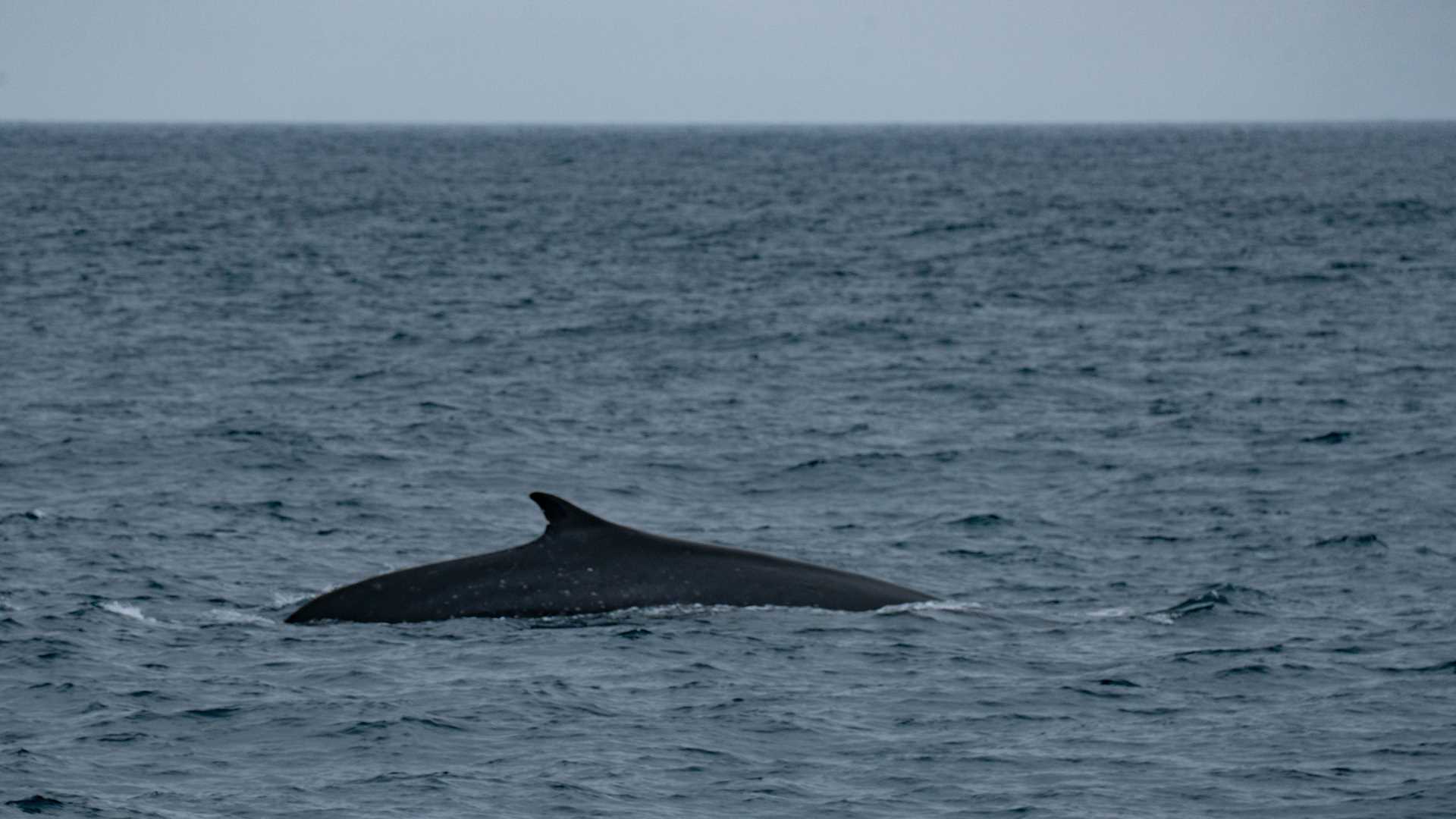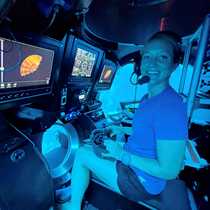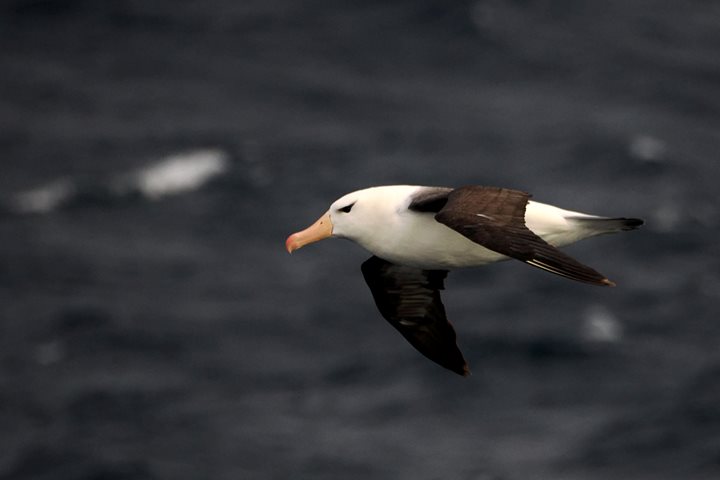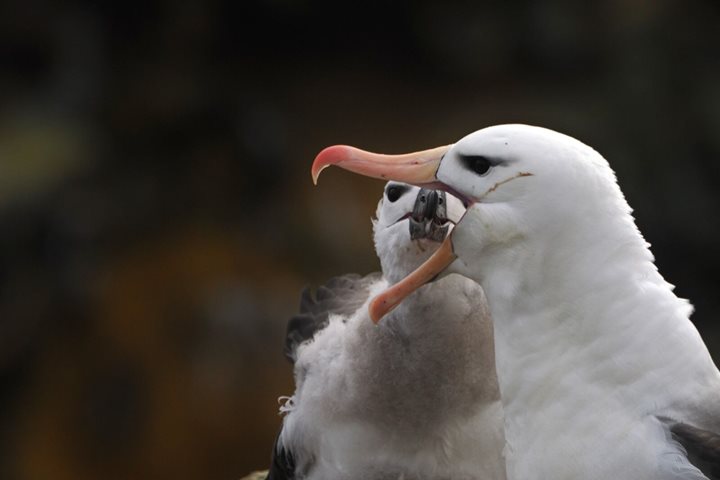Though today was another full day at sea aboard National Geographic Orion, we certainly weren’t lacking in things to see or do. Our next stop will be South Georgia, a rat-free island with many endemic species. Being aware of our environmental impact as travelers, we spent our morning prudently vacuuming and scrubbing all of our outerwear to avoid introducing any invasive species to South Georgia. As we were out on deck scrubbing the remnants of the Falkland Islands from our boots, we noticed that we were encased in heavy fog. The fog brought unusual excitement because it meant we were crossing the Antarctic convergence!
The Antarctic convergence, also known as the polar front, is a biological boundary that fluctuates around 50 degrees south. Stretching about 30 miles, this incredibly productive boundary of water is where the cold Antarctic surface water flowing north meets the warmer sub-Antarctic surface water flowing south. This turbulent area is rich in planktonic organisms, Antarctic krill, seabirds, and other marine life. Though we are still many miles from the Antarctic continent, technically, and biologically, we entered Antarctic waters today. Hooray!
After lunch, we spent time learning from our natural history team about photography and the destinations we will soon be exploring. Just as we were learning about the deep-sea ecosystem from our undersea specialist, an announcement interrupted him mid-sentence: whales ahead! We made record time racing to the bow and outer deck to see our first fin whales of the trip! There were six or more whales feeding near the surface. The tall blows, white right jaw, and sharp falcate dorsal fin made for an easy species ID. This is the second largest whale species in the world, reaching up to 89 feet and weighing a whopping 260,000 lbs. These baleen whales feed by lunging, mouth agape, taking in massive mouthfuls of water and prey (due to our current location, it is most likely that the whales were feeding on krill). They then use the baleen like a sieve to push out the water and selectively keep and swallow the nutrient-dense krill.
Not only did we see fin whales, but many fur seals and seabirds were present in the area. A good indication that we were in a productive and heavily krill-populated bit of ocean. Our on-board ornithologist, Karen, was delighted to point out a wandering albatross, a snow petrel, and a light mantled sooty albatross. How great to add so many new species to our wildlife lists today! The waters have cooled and the mood has changed; we cannot wait to see what the wild Southern Ocean has planned for us.







